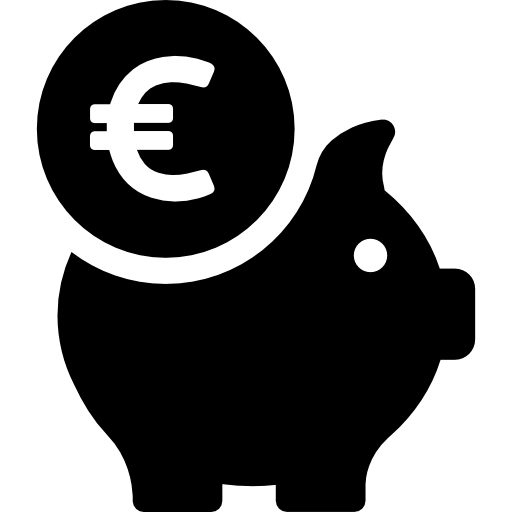
This image has format transparent PNG with resolution 512x512.
You can download this image in best resolution from this page and use it for design and web design.
Piggy bank PNG with transparent background you can download for free, just click on download button.
Piggy bank (sometimes penny bank or money box) is the traditional name of a coin container normally used by children. The piggy bank is known to collectors as a "still bank" as opposed to the "mechanical banks" popular in the early 20th century. These items are also often used by companies for promotional purposes. The use of the name 'piggy bank' gave rise to its widely recognized 'pig' shape, and many financial service companies use piggy banks as logos for their savings products.
Piggy banks are usually made of ceramic or porcelain. They are generally painted and serve as a pedagogical device to teach the rudiments of thrift and savings to children; money can be easily inserted. Many piggy banks have a rubber plug located on the underside; others are made of vinyl and have a removable nose for easy coin access. Some incorporate electronic systems which calculate the amount of money deposited. Some piggy banks do not have an opening besides the slot for inserting coins, which will lead to smashing the piggy bank with a hammer or by other means, to obtain the money within.
Pygg is an orange colored clay commonly used during the Middle Ages as a cheap material for pots to store money, called pygg pots or pygg jars. There is dispute as to whether "pygg" was simply a dialectal variant of "pig." By the 18th century, the term "pig jar" had evolved to "pig bank". As earthenware was supplanted by other materials, such as glass, plaster, and plastic, the name gradually began to refer specifically to the shape of the bank, instead of what was used to make it.
The oldest Western find of a money box dates from 2nd century BC Greek colony Priene, Asia Minor, and features the shape of a miniature Greek temple with a slit in the pediment. Money boxes of various forms were also excavated in Pompeii and Herculaneum, and appear quite frequently on late ancient provincial sites, particularly in Roman Britain and along the Rhine.
The Javanese and Indonesian term c?l?ngan (literally "likeness of a wild boar", but used to mean both "savings" and "piggy bank") is also used in the context of domestic banks. The etymology of the word is obscure, but evident in a Majapahit piggy bank from the 15th century. Several boar-shaped piggy banks have been discovered at the large archaeological site surrounding Trowulan, a village in the Indonesian province of East Java and possible site of the capital of the ancient Majapahit Empire. These are probably the source of the Javanese-Indonesian word referring to savings or money containers. Another Javanese-Indonesian synonym for savings is tabungan, which derives from the word for "tube" or "cylinder". This arises from another method of making coin containers by using a portion of enclosed bamboo segment completed with a slit into which coins are inserted. One important Majapahit piggy bank specimen is housed at the National Museum of Indonesia. It has been reconstructed, as this large piggy bank was found broken into pieces. Majapahit terracotta coin containers have been found in a variety of shapes, including tubes, jars and boxes, each with a slit into which to insert coins.
The general use of piggy banks is to store loose change in a quaint, decorative manner. Modern piggy banks are not limited to the likeness of pigs, and may come in a range of shapes, sizes and colors. They are most commonly used by temples and churches because they are locked money boxes with a narrow opening to drop cash or coins. The box is opened via a plug underneath it at regular intervals, when the collected money is counted and recorded.
In this page you can download free PNG images: Piggy bank PNG images free download